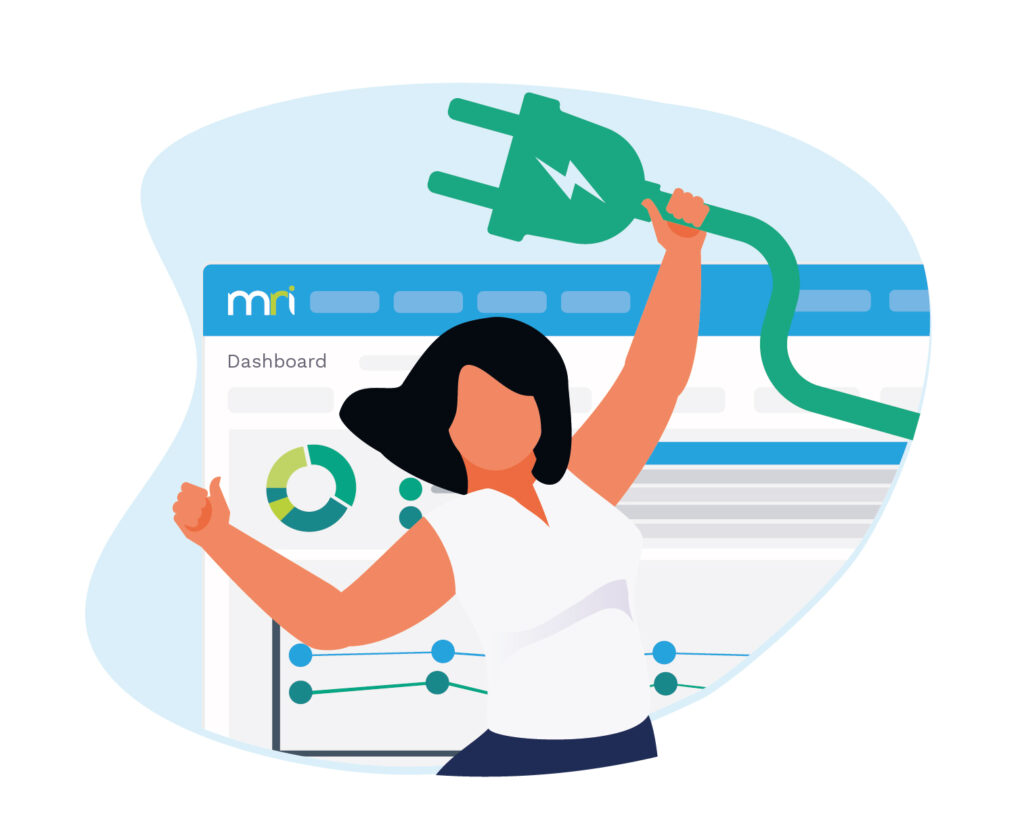Four signs you need to invest in an energy management system
Cutting costs and improving energy efficiency with an energy management system
Looking for a simpler way to consolidate utility and energy data, as well as track energy performance?
It might be time to invest in an energy management system (EMS).
Whether you need to cut costs, go green, achieve compliance with energy efficiency directives or improve energy utilisation, an energy management system (EMS) is integral to consolidating data, driving operational efficiency and achieving energy reduction targets.
Interested in learning more about an energy management service? Request a free demo with one of our experts and discover what MRI eSight’s Energy Management Software can do for you.
Here are four signs it’s time to invest in an EMS.
1. Your business wants to cut costs but you are struggling to manage utilities and energy data across the site
Challenges with utility and energy data management across an enterprise often occur because of the following:
- Data in different formats
- Data stored in mediums and systems across the site – spreadsheets, building automation systems, IoT devices and paper bills from utility companies
- Normalising data in order to establish baselines for reporting
An EMS helps resolve these issues by consolidating all data – including historic, real-time, single-load, facility and site-wide data – into a single platform for end-to-end visibility. As well as providing centralised data management and reporting, it also brings the various facilities management tools under one roof, making it easier to manage separate utilities.
Finally the single-most important benefit is that the EMS will provide real-time energy monitoring, allowing you to create realistic energy reduction targets and cut costs across your operation. You’ll also be able to see energy utilisation, spikes and trends, which in turn will help you to mitigate the effects of energy price increases and/or shortages.
2. Your business needs help with compliance
Every business has a legal obligation to meet energy efficiency targets set by regulators. Failure to comply can result in severe financial penalties – which can be damaging to a business’ reputation; while those that do comply will qualify for incentives, such as tax credits under the Energy Policy Act 2005.
To meet regulatory requirements, most organisations worldwide utilise the ISO 50001 energy management standard. This helps to understand where and when energy is being used, before conducting an in-depth analysis of the data to highlight opportunities for energy savings.
Using an energy management system, this process can be enhanced. Enterprise-wide audits can be automated, providing up-to-date reports on energy performance, costs and consumption. This data can then be used to establish a baseline, aiding the creation of realistic goals and objectives to achieve prescribed targets. It also provides the data you need to report on energy saving targets.
3. Your business has set energy targets, but needs to establish actions to achieve the best return on investment (ROI)
Realising potential energy savings requires an understanding of energy, cost and carbon savings from different energy efficiency measures. Not all measures are the same, so you should try to evaluate the measures available to find out which one(s) provide the best results.
EMS providers can help you in this process. They identify your current energy costs, savings and usage and compare that against objectives, before recommending the most effective measures. For example, it might be a case of redirecting energy from an underutilised utility to another that is overutilized during peak times.
The EMS provider will work with you to develop strategies to improve energy efficiency and reduce costs, such as peak demand reduction strategies, load shifting and demand limiting systems, systems to detect improper set points and detection of schedule misalignments.
Take MRI eSight’s Project Tracking module, for example. It can set targets, analyse energy opportunities, monitor progress and verify savings.
4. Your business is struggling to get widespread engagement/buy-in on energy management goals
To reduce energy consumption and waste across the organisation, widespread engagement and buy-in is crucial. If employees can see the benefits of an energy efficiency initiative, they will be more likely to play their part.
An EMS can help to display energy data – reductions, utilisation, improvement – in an intuitive, interactive and easily accessible way. The MRI eSight ENVI Dashboard, for instance, enables users to toggle through energy usage, savings, carbon emissions, meters and sites.
An energy management system can be a standalone product or a suite of energy management tools in one all-encompassing platform. Ultimately, accurate energy data puts you in control, and an EMS is fundamental for your business.
Realising potential energy savings is easier with the support and expertise of a trusted EMS provider. MRI Software has helped focus energy management goals and implement intelligent energy solutions for businesses globally for 20 years. With proven success in nearly every major sector, MRI eSight is the driving force for your energy saving projects, enabling organisations to save time, establish clear strategies and achieve energy management goals.

Strategies for success: Achieving FM and energy team synergy
Your journey to achieving true FM & energy team synergy begins here. 3 in 4 senior decision-makers in large businesses across the UK consider energy their #1 risk in 2023, according to the latest ‘Drivers of Change’ research from Prot…

